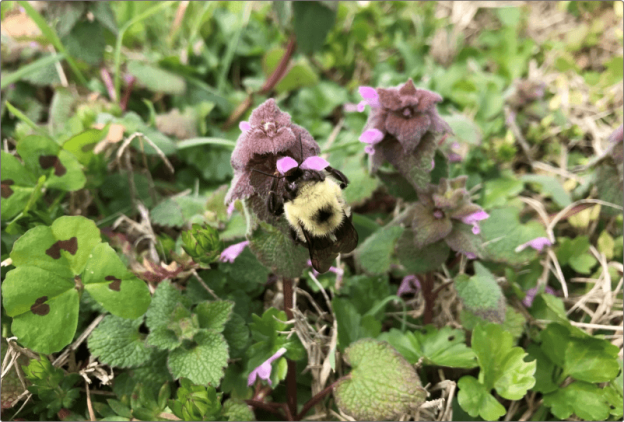By refugelawn, on 05/13/2021
The humid, sub-tropical climate of the southeastern US provides conditions for an abundance of late-winter and early-spring flowering forbs that are capable of nurturing hungry insects. Here we see a bumblebee (Bombus spp.) visiting purple deadnettle (Lamium purpureum). Deadnettle and the closely related henbit (L. amplexicaule), sometimes referred to as henbit deadnettle, common henbit, or greater henbit, are both native to Europe, Asia, and the Mediterranean climates of northern Africa and the Levant. In the US, these are non-native, introduced species. They proliferate in lawns and gardens during the winter and early spring. They germinate during the late fall and early winter (roughly November or December in central Mississippi) and begin flowering as days begin to lengthen and warm (roughly February through early-April). These purple (and sometimes white) flowers are harbingers of spring but are sometimes thought of as weeds in maintained lawns. Refuge Lawn seeks to understand the role of common lawn plants (native and non-native) for sustaining pollinators. These plant species likely offer a welcome insect habitat in an often altered and fragmented environment.
